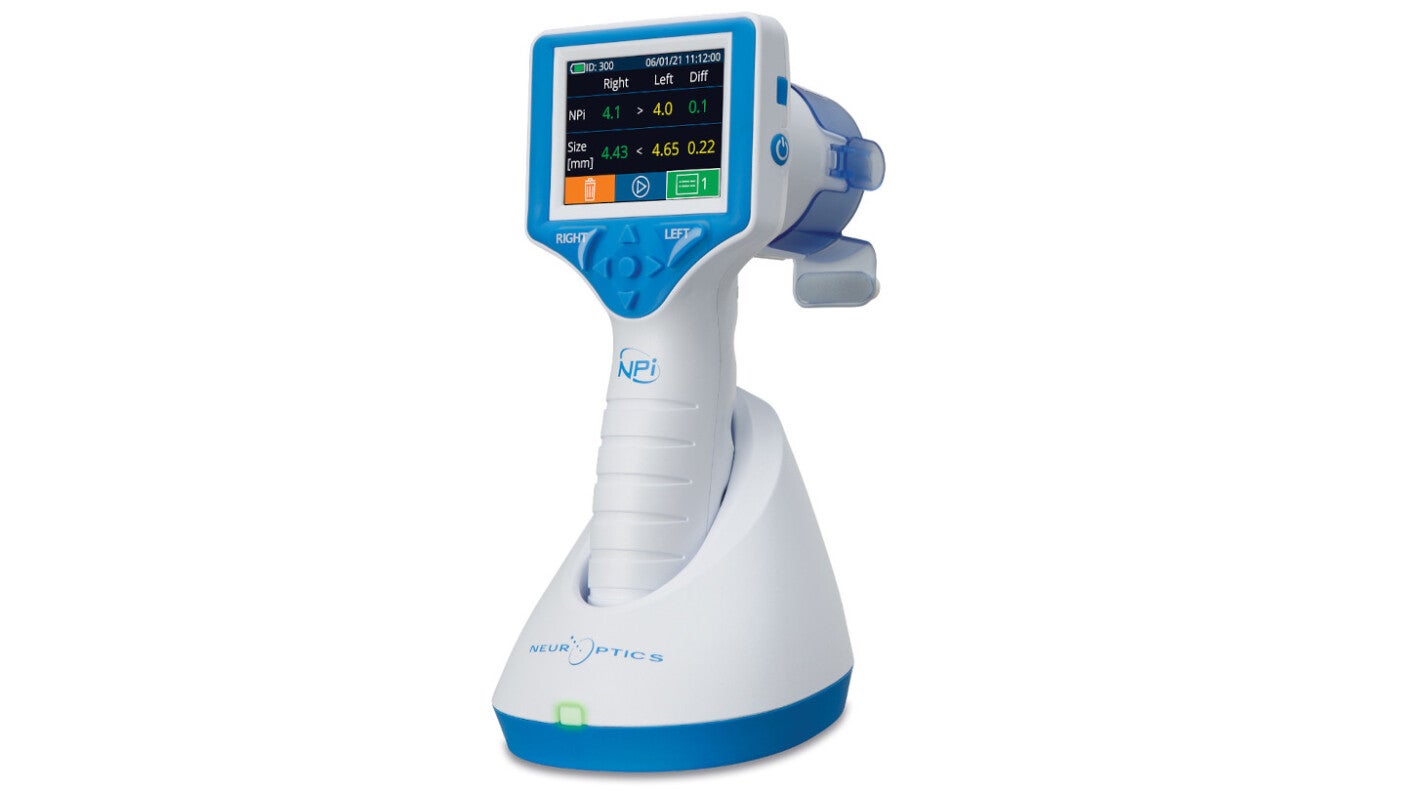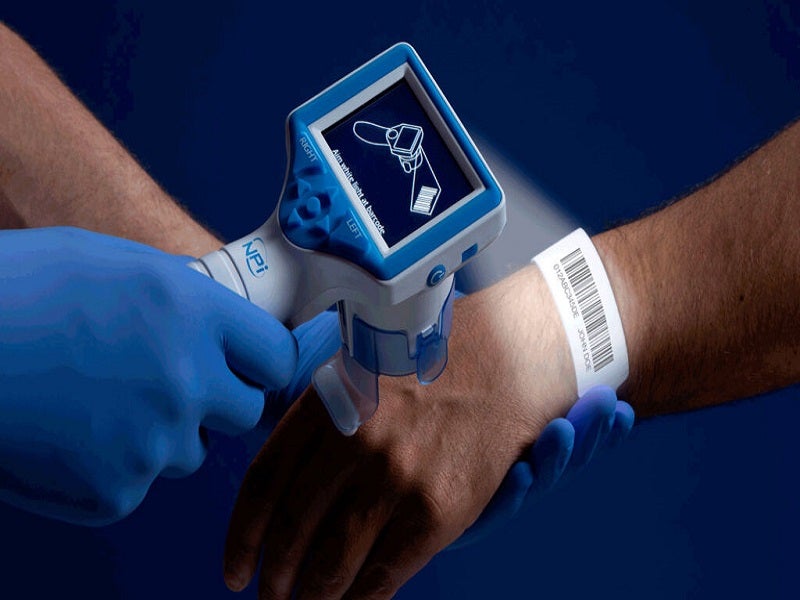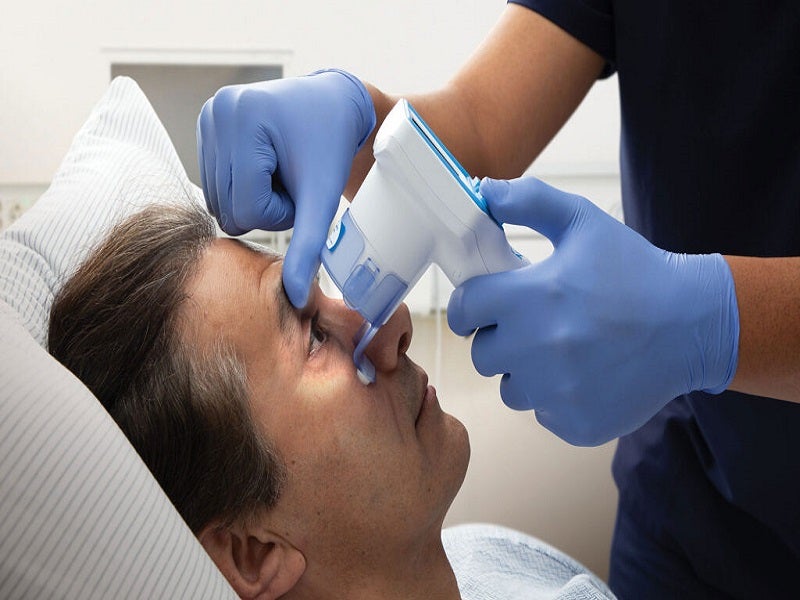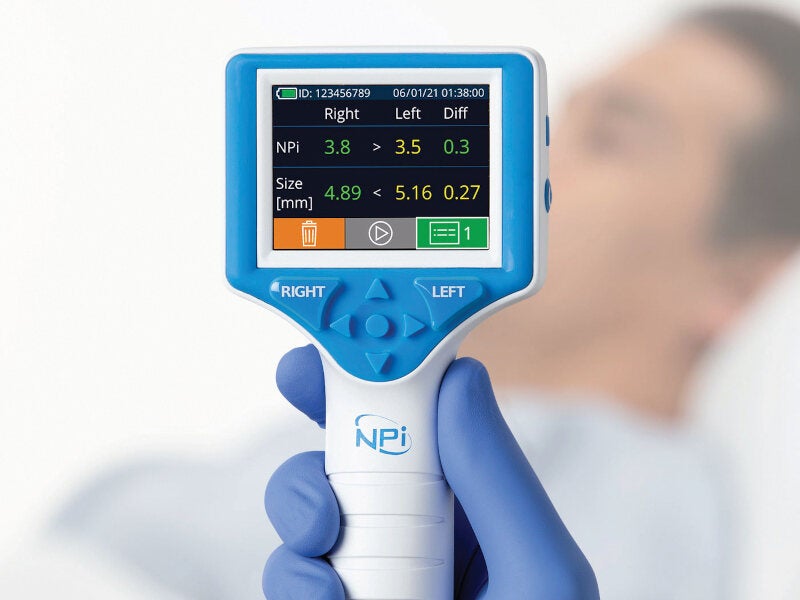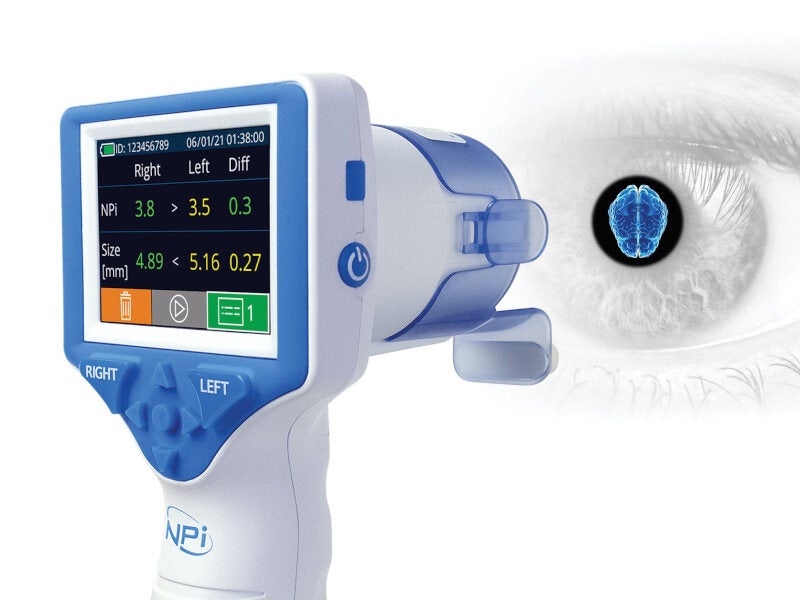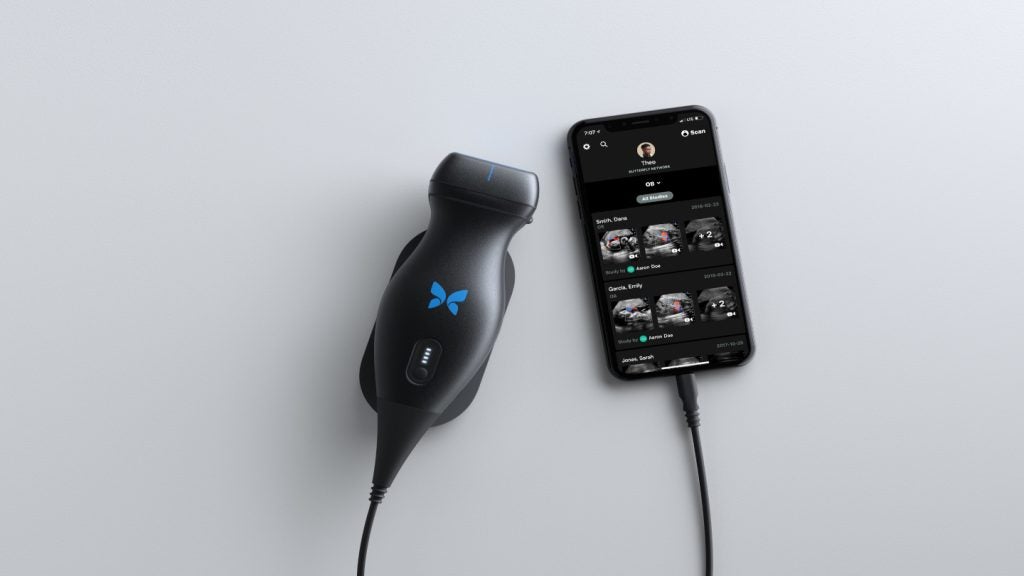NeurOptics’ NPi-300 Pupillometer is a handheld optical scanner that measures pupil size and reactivity in patients.
The next-generation automated medical device advances pupillary evaluation to help physicians diagnose brain injury, guide treatment, and inform prognosis. It also helps to diagnose a broad spectrum of neurological conditions such as traumatic brain injuries, strokes, and seizures in adult and paediatric patients.
Launched in July 2021, the NPi-300 Pupillometer complies with Part 15 of the US Federal Communications Commission Rules. The device is only intended for use by properly trained clinical professionals under the supervision of a qualified physician. Results of NPi-300 scans can serve information purposes but cannot be utilised for clinical diagnostic purposes.
The device is available in 15 countries, including the UK, France, Italy, Germany, Switzerland, Austria, Norway, Sweden, and Denmark.
NPi-300 Pupillometer design and specifications
The NPi-300 Pupillometer system contains an NPi-300 Pupillometer, charging station, power adapter, and plug.
The state-of-the-art pupillometer features a durable, ergonomic design, modern user interface, upgraded keypad, incorporated barcode scanner, and enhanced wireless charging technology.
The NPI-300 Pupillometer’s modern graphical user interface features simple and intuitive icon-based navigation, with an easy-to-read liquid crystal display touchscreen to make the results screen more easily visible.
The upgraded keypad has easy-to-press keys designed to be used with or without gloves for quick and simple navigation. The barcode scanner enables physicians to scan patients’ IDs accurately and instantly.
The device provides clinicians with quantitative infrared technology, featuring high-precision optics, a processor, and an LED light source so that pupil size and reactivity can be measured objectively and accurately in critically ill patients.
The automated NPi-300 Pupillometer eliminates the variability and subjectivity of manual pupillary assessment performed with a penlight, resulting in more accurate, reliable, and objective assessment of pupil size and reactivity for neurological examinations.
Neurological Pupil index scale
Automated pupillometry has emerged as a significant technique for quantitative assessment of pupil size and reactivity, measured as the Neurological Pupil index (NPi). The NPi scale ranges from 0 to 4.9, with scores lower than three considered abnormal.
According to the NPi algorithm, a difference of 0.7 in the NPi between right and left pupils is also considered an abnormal pupil reading.
SmartGuard
The SmartGuard is used once for a patient to associate the patient’s ID, which is then permanently saved on the SmartGuard. It features smart card technology that allows patient data to be uploaded into an electronic medical record (EMR) system. Patient information is then saved in the SmartGuard’s memory.
The SmartGuard reader extracts and uploads patient data from the SmartGuard automatically. The reader can be used at any nursing terminal or station using a simple USB connection. The patient’s data can be deactivated in line with Health Insurance Portability and Accountability Act guidelines and facility policies.
Clinical studies
A peer-reviewed study published in BMC Neurology in September 2022 examined more than 54,000 NPi scores measured by NeurOptics’ NPi-300 Pupillometer in 1,285 patients who suffered from stroke or traumatic brain injury at hospitals in the US and in Japan. The study showed that a single abnormal NPi reading can be an early indicator of neurological injury.
Another clinical study published in the Journal of the American College of Emergency Physicians in January 2023 enrolled 119 patients with confirmed clinical intoxication from ethanol, opioids, or other drugs of abuse.
The study showed that the NPi reading measured by NPi-300 Pupillometer is not affected by clinical intoxication and can be used for screening emergency room patients for neurological injuries.
In September 2023, a multicentre international study was published in the Lancet Neurology journal. The study enrolled 514 patients diagnosed with acute brain injury from 13 hospitals across eight countries. Results of the study showed that NPi reading measured by the NPi-300 Pupillometer can be used to predict neurological outcomes and six-month mortality rates.
Benefits of the NPi-300 Pupillometer
The NPi-300’s completely enclosed wireless charging system improves the reliability and ease of charging. It can be easily cleaned with hospital cleaning agents.
The system allows clinicians to scan a new 1D or 2D patient ID accurately, instantly and easily.
The NPi-300’s texturised plastic ergonomic handle design improves grip and helps to reduce dropping and discolouration.
By uploading information into any hospital EMR system utilising the SmartGuard reader, clinicians can minimise the risk of data input errors and save nursing time.

